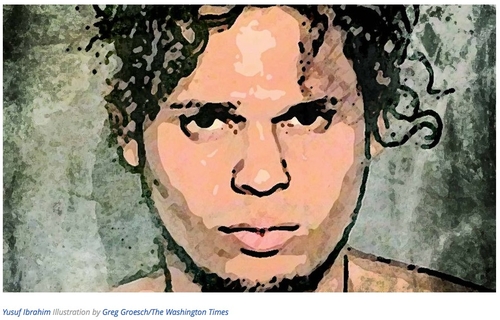The police and press did an impressive job of sleuthing into the lives and motives of Syed Rizwan Farook and Tashfeen Malik, the married couple who massacred 14 people on Dec. 2, in San Bernardino, California.
We know about their families, their studies and employment histories, their travels, their marriage, their statements, and their preparations for the assault. Most importantly, the cascade of background work means we know that the pair had jihadi intentions, meaning, they attacked in their role as pious Muslims spreading the message, law, and sovereignty of Islam.
We are all better off for knowing these facts, which have had a powerful impact on the body politic, making Americans far more concerned with jihadi violence than at any time since just after 9/11, as they should be. For example, in 2011, 53 percent told a pollster that terrorism was a critical issue; that number has now reached 75 percent.
But what about the case of Yusuf Ibrahim? In early 2013, when he was 27, this Egyptian-born Muslim lived in Jersey City, when he allegedly shot, then cut off the heads and hands and knocked the teeth out of two Coptic Christians, Hanny F. Tawadros and Amgad A. Konds, then buried them in Buena Vista Township, New Jersey.
 Yusuf Ibrahim. There are no publicly available pictures of his victims, who remain faceless and featureless. |
He is charged with two counts each of murder, felony murder, kidnapping, robbery, desecration of human remains, and other crimes. In addition, he has pleaded guilty to a Dec. 22, 2011, carjacking and a Sep. 20, 2012, armed robbery, both in Jersey City (in the latter, he shot his victim in the foot), and early in 2015 he was sentenced to 18 years in prison for these later crimes.
The twin beheadings are spectacular, gruesome, and replete with jihadi (or in police parlance, "terrorist") elements. Historian Timothy Furnish explains that "ritual beheading has a long precedent in Islamic theology and history," making it a distinctly Muslim form of execution. A Muslim killing a non-Muslim fits the ageless pattern of Islamic supremacism. It also fits a tragic pattern of behavior in the United States in recent years.
Yet the police, politicians, the press, and professors (i.e., the Establishment) have shown not the slightest interest in the Islamic angle, treating the double beheadings and amputations as a routine local murder. Symptomatic of this, the police report about Ibrahim's arrest makes no mention of motivation; on the basis of this lack of mention, left-leaning Snopes.com (which describes itself as the "definitive Internet reference source for urban legends, folklore, myths, rumors, and misinformation") goes so far as to dismiss as "false" the allegation that the mainstream media "deliberately ignored" this incident. The wagons have been circled.
Almost three years after the event, we know next-to-nothing about Ibrahim, his motives, his possible connections to others, or his institutional affiliations. We also do not know the relationship of the accused attacker to his victims: Was he a criminal who fell out with his accomplices, a friend who had drunk too much, a would-be lover knocking off his rivals for the affections of a woman, a family member eliminating aspirants for an inheritance, a crazy man randomly shooting passers-by? Or was he perhaps a jihadi seeking to spread the message, law, and sovereignty of Islam?
I cannot answer those questions because the case lingers in total obscurity, popping up from time to time only in connection with some technical procedural matter (such as the amount of Ibrahim's bail or the admissibility of his confession) that sheds no light on the motives for his alleged crime.
Nor is the Ibrahim case unusual. I have compiled long lists of other potential instances of jihadi violence (here, here, and here) in which the Establishment has colluded to sweep the Islamic dimension under the rug, treating the perpetrators as common criminals whose biographies, motives, and connections are of no interest and therefore remain unknown.
This silence about possible jihad has the major consequence of lulling the American public (and its counterparts elsewhere in the West) into believing jihadi violence is far rarer than is the case. If the body politic understood the full extent of jihad in America, the alarm would be much greater; the percentage of those calling terrorism a critical issue would rise much higher than the current 75 percent. That, in turn, might push the Establishment finally to get serious about confronting jihad.
Mr. Pipes (DanielPipes.org, @DanielPipes) is president of the Middle East Forum. © 2015 by Daniel Pipes. All rights reserved.
